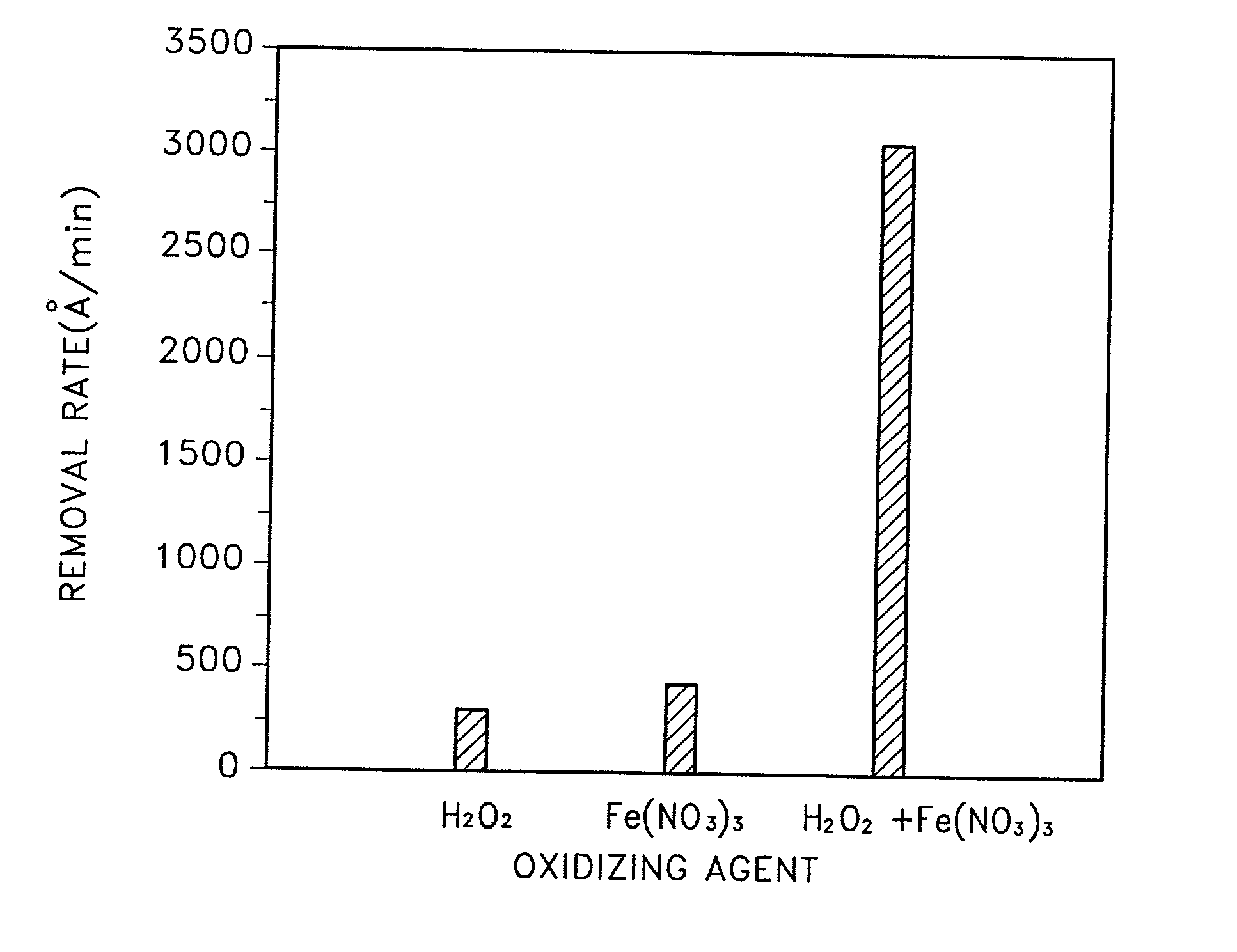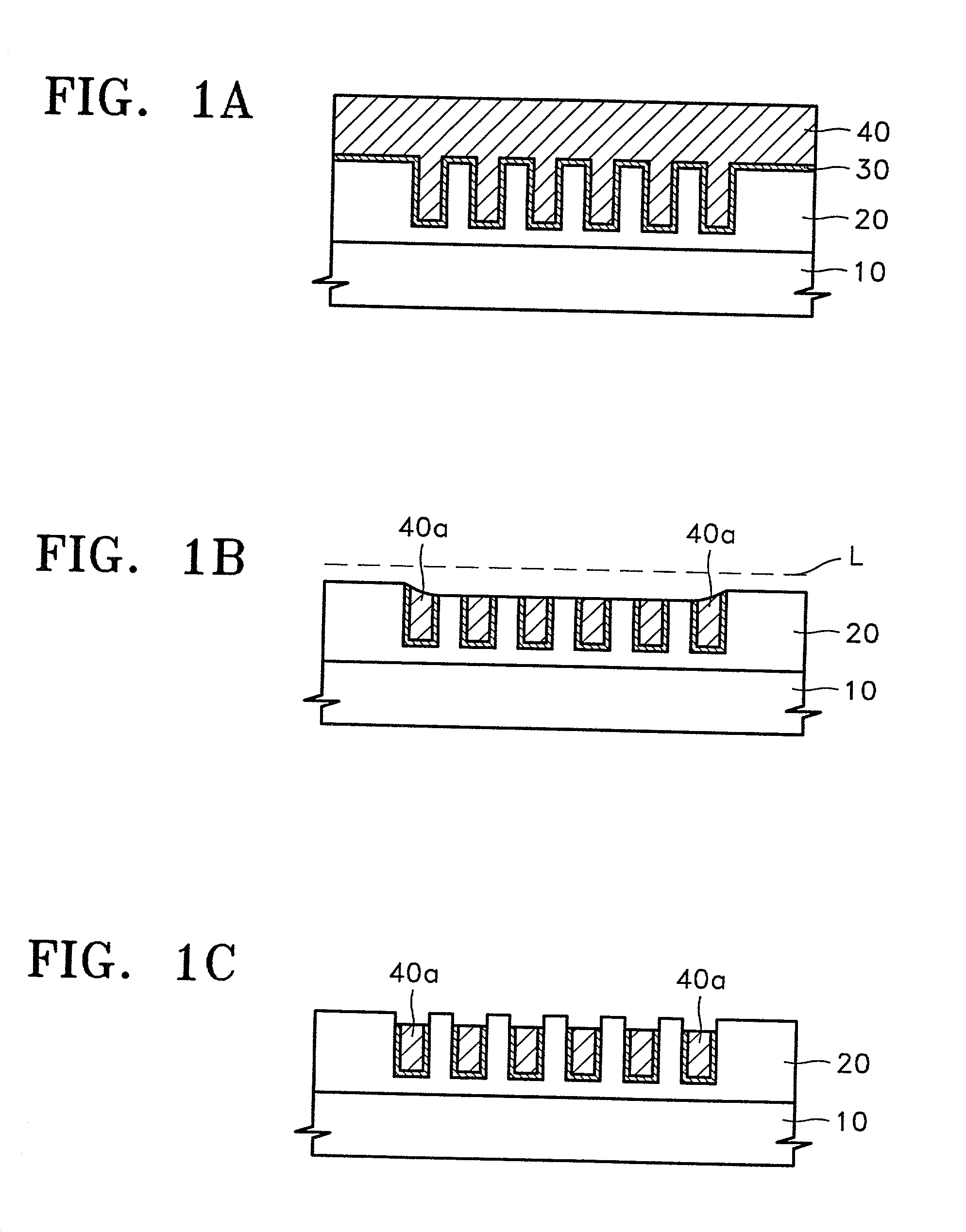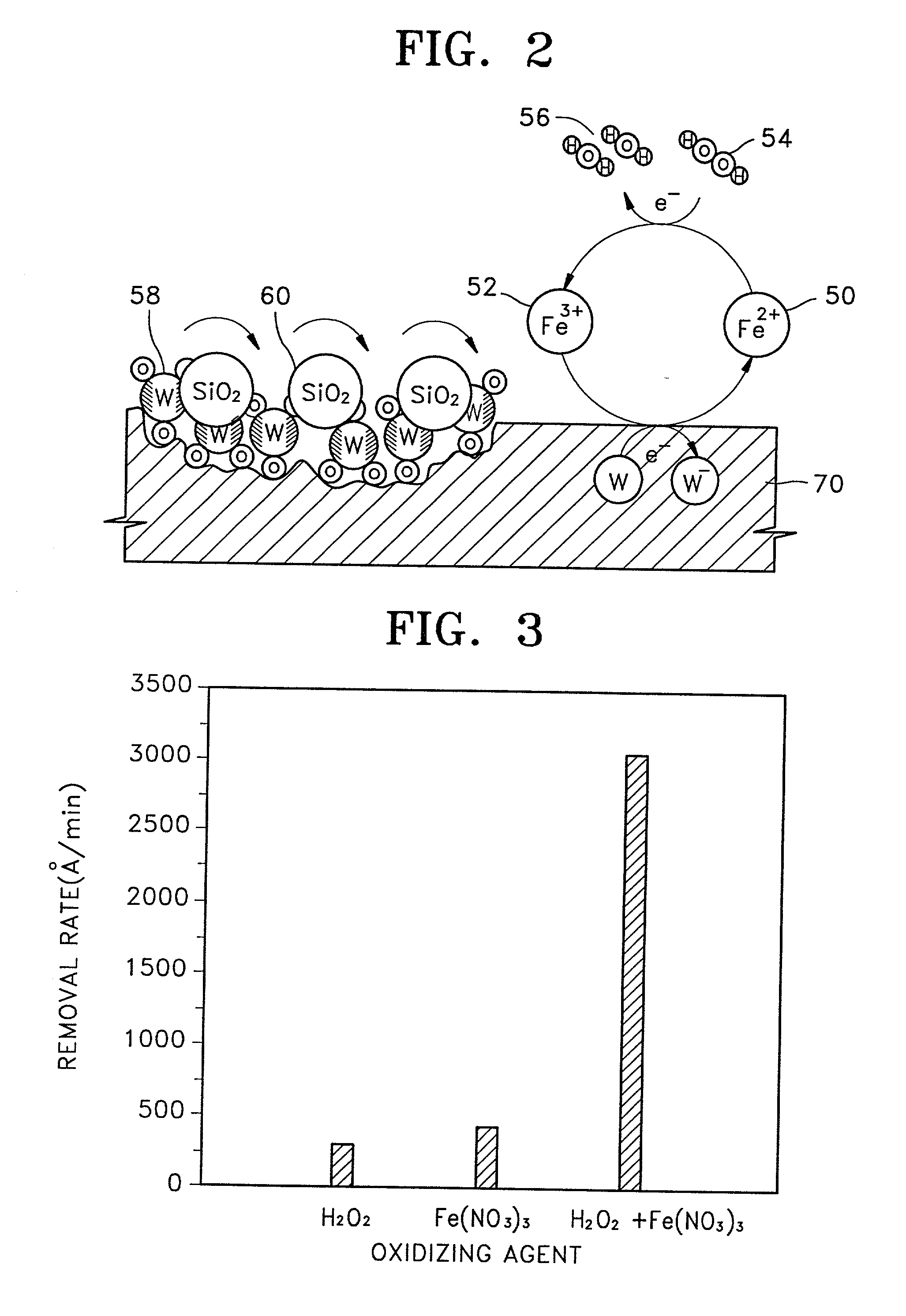Slurry for chemical mechanical polishing of metal layer, method of preparing the slurry, and metallization method using the slurry
a technology of mechanical polishing and slurry, which is applied in the direction of polishing compositions with abrasives, basic electric elements, electric instruments, etc., can solve the problems of excessive removal of certain material layers or portions thereof, high surface structure complexity of such semiconductor devices, and number of well-known fabrication problems, etc., to improve the reproducibility of the cmp process, improve the reproducibility, and strong oxidizing ability
- Summary
- Abstract
- Description
- Claims
- Application Information
AI Technical Summary
Benefits of technology
Problems solved by technology
Method used
Image
Examples
example 3
[0075] Evaluation of slurry characteristics with respect to the amount of second oxidizing agent and fluorine compound
[0076] The removal rates of a tungsten (W) layer and a titanium (Ti) layer with respect to the amounts of the second oxidizing agent in the second solution, and a fluorine compound were evaluated.
[0077] H.sub.2O.sub.2 and Fe(NO.sub.3).sub.3 were used as the first and second oxidizing agents, respectively. While the amount of H.sub.20.sub.2 was fixed at 2% by weight based on the total weight of the slurry, the amount of Fe(NO.sub.3).sub.3 was varied at 0.05, 0.1 and 0.2% by weight. Also, the amount of HF was varied at 0 and 0.01 % by volume based on the total volume of the slurry, thereby resulting in 6 sample slurries.
[0078] To form a W layer to be polished, a high-temperature oxide (HTO) film was deposited over a silicon substrate to a thickness of 1000 .ANG., and a TiN layer and the W layer were deposited in succession to a thickness of 1000 A and 10000 A, respect...
PUM
| Property | Measurement | Unit |
|---|---|---|
| pH | aaaaa | aaaaa |
| thickness | aaaaa | aaaaa |
| thickness | aaaaa | aaaaa |
Abstract
Description
Claims
Application Information
 Login to View More
Login to View More - R&D
- Intellectual Property
- Life Sciences
- Materials
- Tech Scout
- Unparalleled Data Quality
- Higher Quality Content
- 60% Fewer Hallucinations
Browse by: Latest US Patents, China's latest patents, Technical Efficacy Thesaurus, Application Domain, Technology Topic, Popular Technical Reports.
© 2025 PatSnap. All rights reserved.Legal|Privacy policy|Modern Slavery Act Transparency Statement|Sitemap|About US| Contact US: help@patsnap.com



